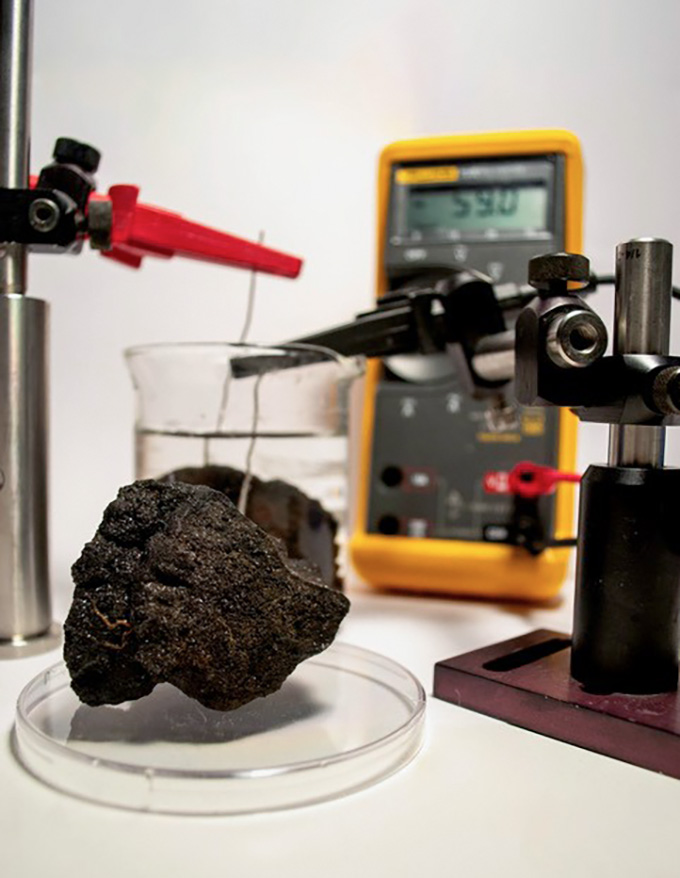In an unexpected twist, metal-rich nodules found on the seafloor are generating oxygen, new research suggests. This meager but steady supply of the vital gas may help support seafloor ecosystems in areas currently targeted for deep-sea mining, scientists say.
Scientists have long presumed that much of the dissolved oxygen in the deep sea was transported there from surface waters. It can be generated at the surface by plant life via photosynthesis or diffuse from the atmosphere as a result of wave action, says Andrew Sweetman, a deep-sea ecologist at the Scottish Association for Marine Science in Oban.
But new experiments, both in chambers lowered to the Pacific Ocean seafloor and in the lab, indicate that there can be other sources for that oxygen, Sweetman and his colleagues report July 22 in Nature Geoscience.
Sweetman has been studying seafloor ecosystems thousands of meters deep in the Pacific for years. In broad areas there, metal-rich nodules that contain valuable minerals — and are thus targets for mining — litter the seabed (SNE: 2/21/14). On several expeditions, the team’s dissolved oxygen sensors oddly suggested that the substance, rather than just being consumed by organisms, was actually, on the whole, being produced. The researchers dismissed the readings as erroneous and then had the instruments recalibrated for their next outing.
After several such expeditions yielded similarly anomalous readings, the team developed a different method of measuring dissolved oxygen — which also showed that the gas was being generated.
The team’s data showed that the rogue oxygen wasn’t coming from bubbles trapped in their equipment, nor was it seeping out of the polymer material used to make the test chambers. It also wasn’t the result of natural radioactivity of metals in the nodules splitting water molecules or the breakdown of manganese oxide minerals in the nodules. Lab tests under conditions mimicking the frigid darkness of the Pacific seafloor also indicated the concentrations of dissolved oxygen were rising, not falling, in the presence of the nodules.
“That’s when we said ‘My god, we have another source of oxygen,’” says Sweetman.

When team members further tested the nodules, they found that the lumps were acting like tiny batteries, producing up to 0.95 volts between some spots on the lumps’ surfaces. Although it takes a little more than 1.5 volts to split seawater into hydrogen and oxygen, Sweetman suggests that under certain conditions, groupings of nodules can together produce enough voltage to do the trick.
Oxygen production seems to be happening on the surfaces of the nodules, Sweetman says. In the team’s tests, the rate of oxygen production appears to be correlated with the average nodule surface area, the researchers report.
“In the bigger picture, this is just one of many processes in the deep sea that we’re only now discovering,” says Lisa Levin, a biological oceanographer at Scripps Institution of Oceanography in La Jolla, Calif. More than half of the biodiversity in these ecosystems lives on the nodules, taking advantage of the hard surfaces for footholds, but also possibly to access the oxygen being generated there. It’s not clear, she notes, whether the organisms living in the underlying sediments also depend on this local source of oxygen.
“It’s surprising that we didn’t know about this [process] before, that we’ve overlooked it,” says Beth Orcutt, a geomicrobiologist at the Bigelow Laboratory for Ocean Sciences in East Boothbay, Maine.
Deep-sea mining of the metallic nodules would stir up plumes of sediment that could reaccumulate and smother nearby unmined areas. If so, mining could reduce the production of oxygen there, Orcutt adds, though it’s unclear what this might do to the wider ecosystem. That reduction would be above and beyond the amount resulting from removal of the nodules themselves.
“At this point,” she notes, “we don’t know if oxygen production has an impact beyond the area around the nodules.”
#seafloor #surprise #metalrich #chunks #generate #deepsea #oxygen
Image Source : www.sciencenews.org